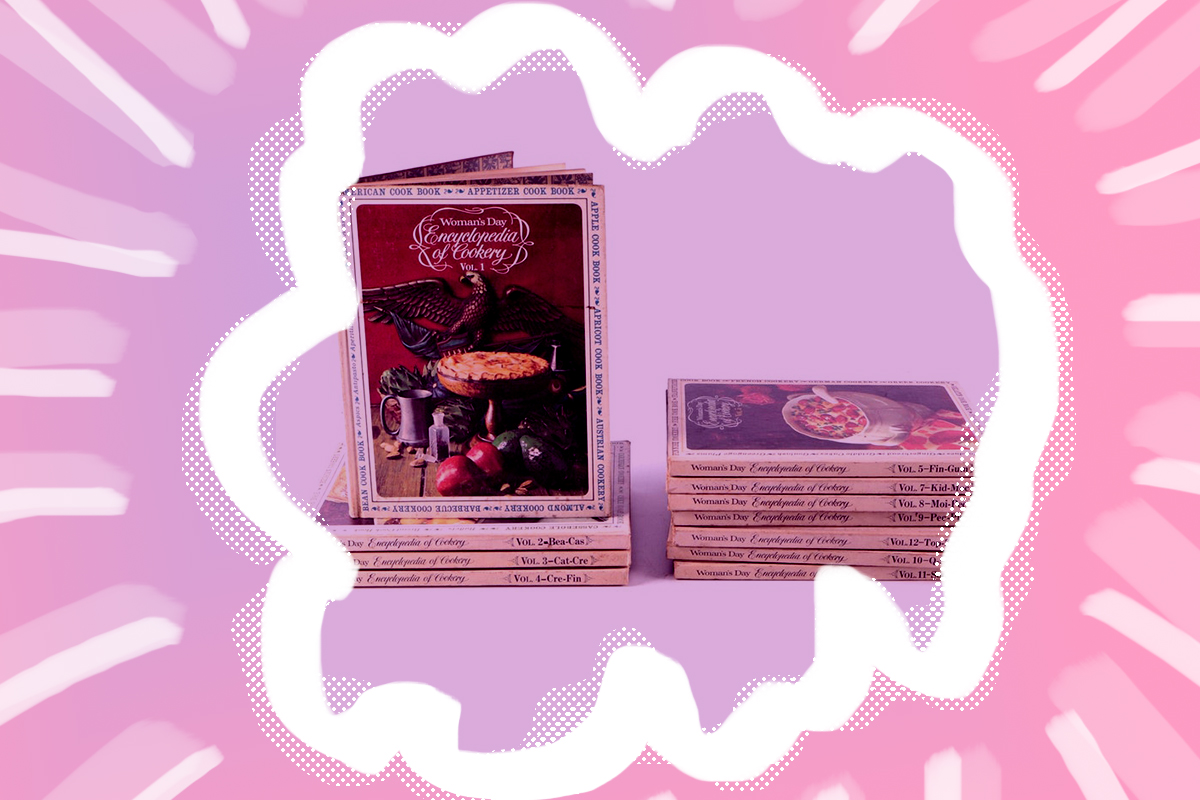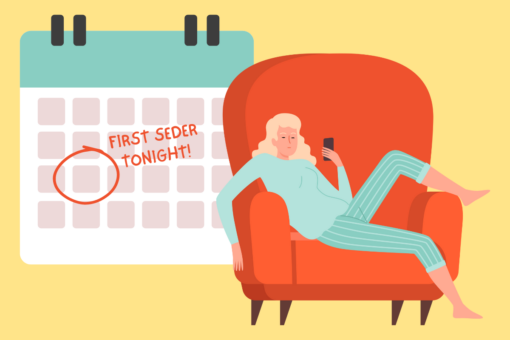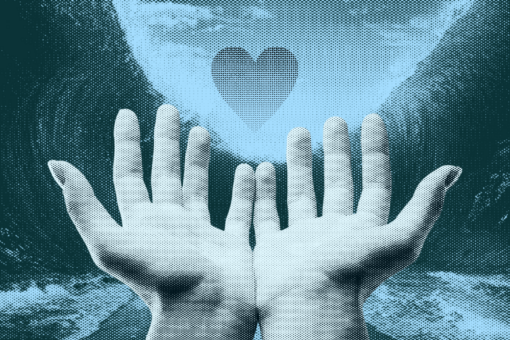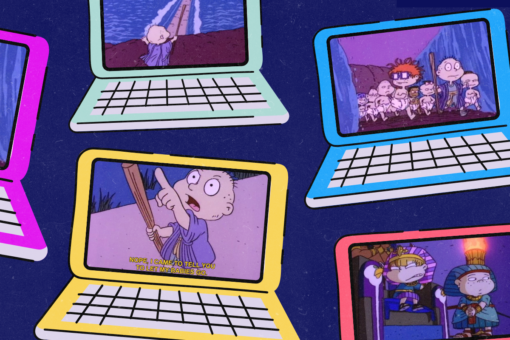The first time I visited my father-in-law’s farmhouse in upstate New York, the first thing that captured my attention was his massive collection of vintage cookbooks. In particular, I was intrigued by the 22-volume collection of The Woman’s Day Encyclopedia of Cookery, which is exactly what it sounds like: an encyclopedic cookbook collection. Published in 1966, the set contains over 1,800 photos in the kind of over-saturated, vaguely pornographic color palette that defined early food photography. There are sections on everything, organized in painstaking alphabetical order, from how to pack for a fishing picnic to dozens of variations on the Jello mold.
At the beginning of the pandemic, my husband and I spent seven weeks at the farm, sleeping in his childhood bedroom and helping to care for my father-in-law, who has moderate Alzheimer’s. The shift from being newlywed Brooklynites to full-time caretakers living on a farm in the middle of a global pandemic was harder than I had imagined it would be. Like most things, I figured, we would take it in stride. We spent weekends up at the farm a few times a month — how different could temporarily living there be? Very different, it turns out, and mentally and emotionally exhausting. The one thing that’s kept me from completely losing my mind? Cooking my way through the Woman’s Day Encyclopedia set.
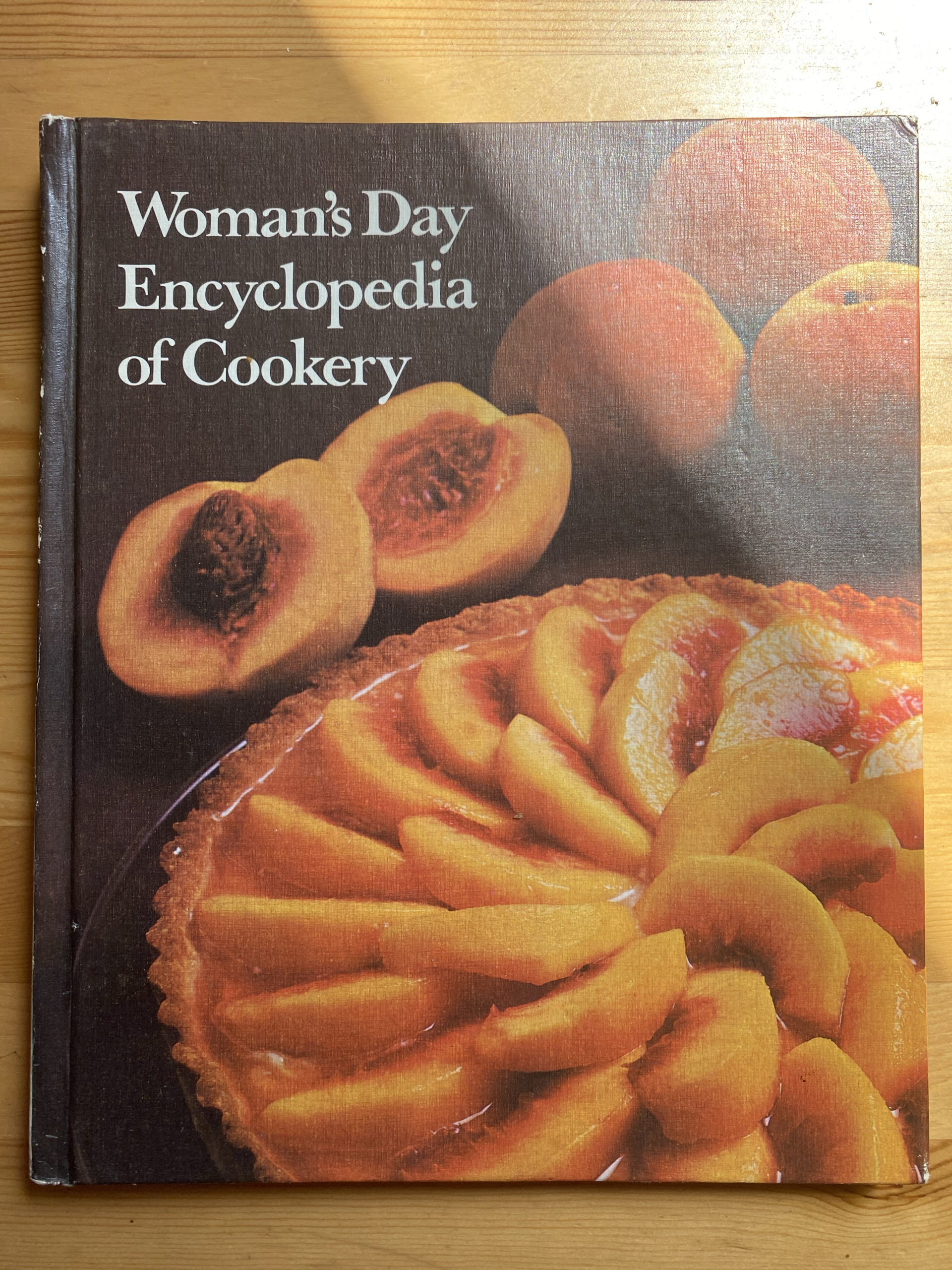
I’ve spent countless hours flipping through the volumes, not looking for anything in particular, but allowing myself to be surprised by the discovery of gems like entire sections devoted to Pennsylvania Dutch cooking or sardines. I’ve stared in amazement at the sheer volume of recipes that include French dressing. I let myself sink into the predictable order of alphabetization, moving seamlessly from petit fours to pheasant and onward to Phillipine cookery and pickles. I actually made a Jello mold, complete with suspended bits of fruit and a whipped cream topping; it was not the worst thing.
In the Before Times, I had a stressful corporate marketing job that kept me running around Manhattan, surviving on a steady diet of coffee, croissants, green juice, and dinners out. Cooking has always been my ultimate de-stressor, the thing that keeps me feeling grounded and connected to my loved ones, but it had taken a backseat to what felt like constantly shifting priorities.
By May, my life could not have looked more different. I was living rurally, working full-time as a freelance writer (the corporate marketing gig gone, perhaps for good and for the best), and cooking three meals a day for my family. In early spring, I was excited to have endless time to devote to all-day braises and complicated pastry, but by the time the weather had turned warm, I actually began to understand what the retro cliché “dishpan hands” — the phenomenon of dry, chapped hands from constantly washing dishes — felt like.
Most of my friends were set up with their partners in apartments in Brooklyn or Queens, still able to order delivery and tune out to hours of reality TV. Suddenly, there were huge aspects of my life to which they couldn’t relate. Most of them thought that my husband and I were living in a pastoral paradise, not realizing that our days were filled with administering medicines, explaining what an iPhone does, and making a second dinner when Pa would forget that he had just eaten one.
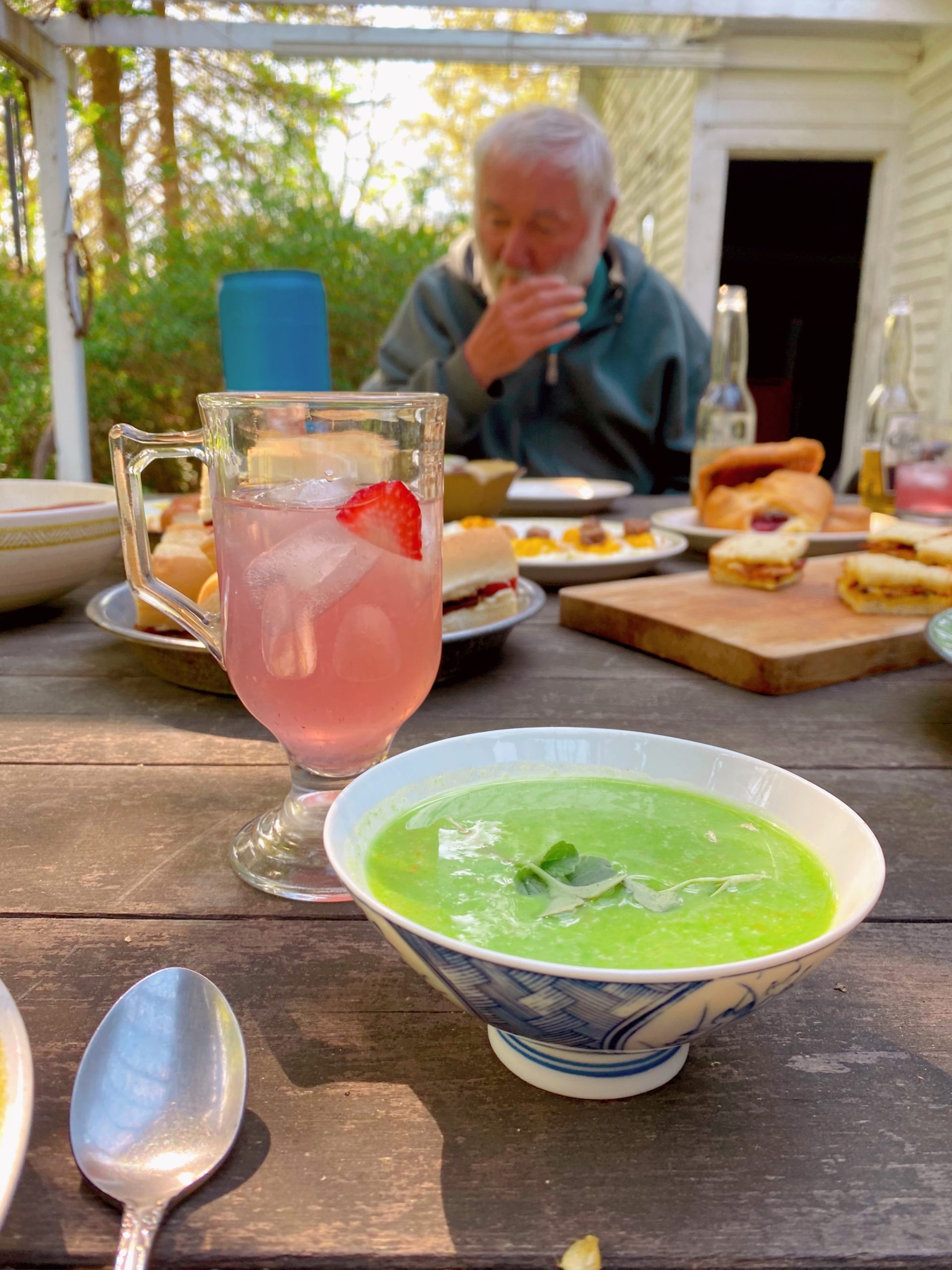
In the pages of the Women’s Day Encyclopedia, I found something that I could relate to. Scattered throughout the pages are thoughtfully written essays that provide a glimpse into another time, when women were homemakers just as often as not. Before there was Pinterest, there were women’s magazines, and volumes like these that provided a sense of community to women who may have felt isolated. It wasn’t that I didn’t like doing all of the cooking — in fact, I’m so bossy in the kitchen that my husband doesn’t stand a chance in trying to share the workload.
In an era where everyone with a smartphone and an Instagram account is a food blogger, it can be hard to find reliable sources for recipes. Even though I do a fair amount of professional recipe developing myself, sometimes, I just want to be told what to do with my pantry staples.
These books provided a viable alternative to scrolling through food blogs, wondering whether or not the recipe would actually turn out.
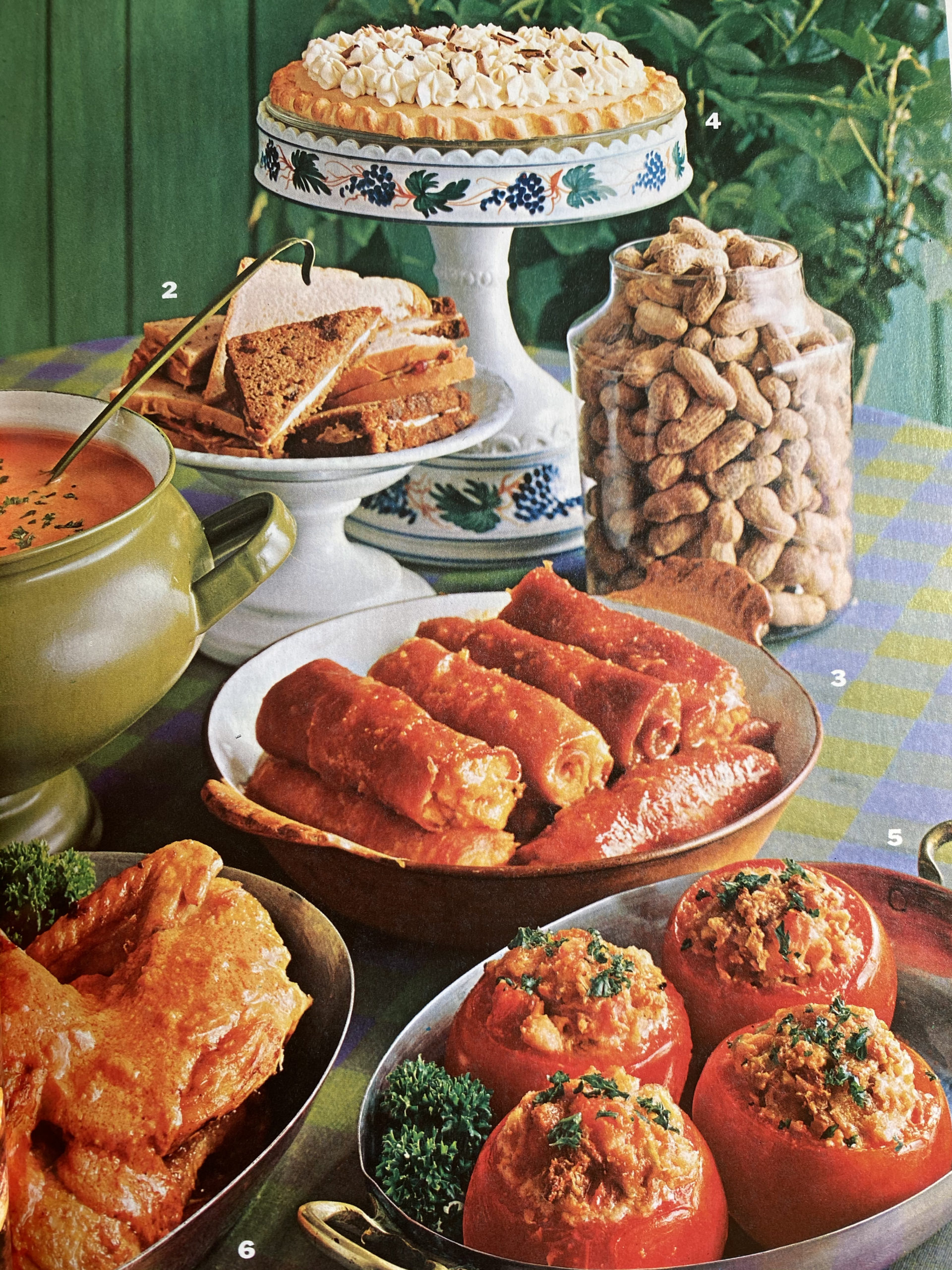
While I normally relish looking at a pile of ingredients and coming up with something on the fly, there have been times this spring and summer where even thinking about thinking about dinner has been too much. I’ve dipped in and out of the texts, sitting on the butcher’s block with a stack of volumes, opening to random pages in an effort to take some of the decision-making out of dinner.
Every recipe I’ve culled from the pages has been good, from the peanut butter, French dressing, and bacon sandwiches (try it!) to the curry pea gazpacho. The “Creole Corned Beef Hash,” one of James Beard’s own recipes in the section on budget-friendly meals, was such a big hit that I’ve made it multiple times. It’s really just a can of corned beef jazzed up with hot sauce, ketchup, onions, and hot peppers, but the fact that I didn’t have to improvise it on my own made the results feel sublime.
By cooking through the Woman’s Day Encyclopedia of Cookery, I’ve learned that I can rely on the expertise of generations of home cooks before me.
How I Keep Calm is our series featuring different ways people manage anxiety. If you have a pitch for this column, please e-mail submissions@heyalma.com with “How I Keep Calm” in the subject line.
All images courtesy author.
